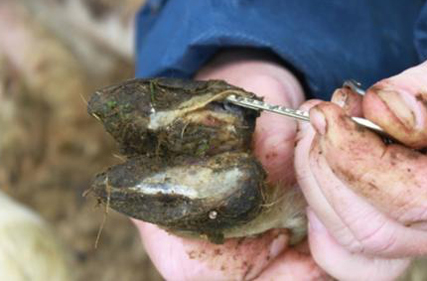 Foot health is essential to the wellbeing of sheep. Sore or diseased feet can result in lameness which can severely affect sheep productivity.
Foot health is essential to the wellbeing of sheep. Sore or diseased feet can result in lameness which can severely affect sheep productivity.
Signs of lameness can be obvious or very subtle.
Watch for:
- weight not borne evenly on all legs
- obvious discomfort when moving or standing
- uneven posture, even without obvious shortening of stride
- uneven stride or short steps
- head bobbing in time with the short stride and the shoulder may also drop
- excessive flicking of the head
- refusal to walk or to stand
- bunny hopping or taking pressure off sore front feet by hopping on back feet (eg toe abscesses)
- carrying one leg when standing or walking.
Tips for good feet management include:
- understand the normal shape of the sheep’s foot and how to pare (trim) feet
- promptly inspect the feet of any sheep that are lame and take appropriate action
- prior to purchasing sheep always inspect the feet of as many of the sheep as possible and request a fully completed National Sheep Health Statement/valid footrot vendor declaration. Consider holding introduced sheep in a quarantine paddock and assess their feet after exposure to soil moisture.
- inspect rams’ feet prior to purchase, and at least eight weeks before joining. Pare to the normal shape if required
- avoiding over trimming feet. Over trimming can cause bleeding and pain and can lead to the formation of toe granulomas
- after paring, observe sheep for lameness and bleeding. Keep any lame sheep or sheep with bleeding feet in a holding paddock with feed, water and shelter until they have recovered.
https://www.mla.com.au/news-and-events/industry-news/make-sure-your-sheep-have-happy-feet/
